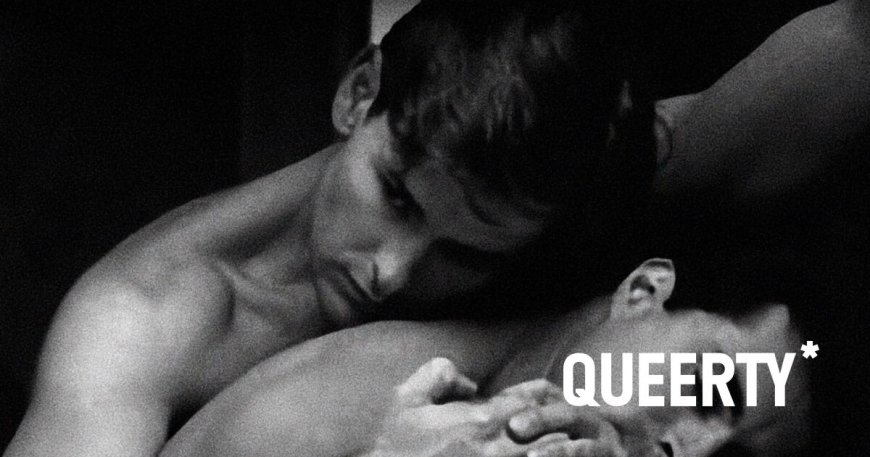British experimental group Coil soundtracked ’90s queer life on ‘Gay Men’s Guide to Safer Sex’
British experimental band Coil crafted a soundtrack that would come to represent the noise of 90s gay life.


It was only a few decades ago that health practitioners’ guidance for LGBTQ+ people who wanted to have safe sex was a single sentence: “If you don’t want to have HIV, don’t have sex.”
Dissatisfied with the status quo, a resilient queer community looked inward for support and education, leading to the creation of formative (and sensual) short film Gay Men’s Guide to Safer Sex.
The 1992 flick –– which was later updated and re-released in 1997 with additional info –– was pivotal in many ways, depicting filmmaker Rob Falconer and Dr. Mike Youle discussing safe sex tips, developments in HIV research, and the unique struggles of being queer in the nineties. OK, yes, and a revolutionary amount of real gay sex. (What did you expect from the title?)
But its staying power, as highlighted by a recent screening of the movie in London, likely boils down to its atmospheric and hypnotic techno score, crafted by British experimental band Coil.
Listen.
The sonically groundbreaking group, led by John Balance and his partner at the time Peter “Sleazy” Christopherson, is oft-forgotten in the annals of queer history.
Uncompromising in sounds, visuals, and spirit, Coil may better fit in a pretentious playlist of vintage indie-gems than alongside their glossy gay contemporaries like Elton John and George Michael. Nonetheless, AllMusic dubbed them “highly regarded in dance and industrial circles.”
Furthermore, soundtracking Gay Men’s Guide was hardly their only act of defiance in an era when homophobia ran rampant, particularly in Britain.
It was Coil’s devastating cover of “Tainted Love” (recorded “as a response to the AIDS epidemic ravaging the world”) that earned them widespread recognition in 1985.
In its heartbreaking and haunting visual, the band depicted a young man battling the disease with unflinching honesty and anger. The first-of-its-kind video would later be purchased by The Museum of Modern Art for its collection on films about AIDS.
That being said, the band’s fascination with occult, drugs, and alchemy wasn’t immediately resonant with the queer community at-large. But that wasn’t their goal, either.
After all, the ’80s gay scene was “pretty naff as a rule,” says Balance and Christopherson’s friend Paul Hampshire.
“I don’t think [they] would be naive that they would expect the gay community and the gay press to understand what they were doing,” he told Spin in 2021. “[Coil’s music was] not going to get played in gay pubs and bars.”
Still, there’s an unmistakable queer sensibility to the band’s dark and psychedelic discography. One that feels even more recognizable today.
“National newspapers would openly deride gay people using slurs as front page headlines. And all in the face of AIDS, when we were seeing friends and lovers die,” Coil band member Stephen Thrower told Spin.
“We were never backwards in coming forward about this. The realization that you were so profoundly at odds with the wider culture gave your purposeful disconnection a real edge of loathing.”
While Coil released an overwhelming amount of music in their two-decade tenure, the band “ceased to exist” following the tragic death of Balance, who died in 2004 after falling from a balcony at his home. In 2010, Christopherson passed in his sleep at age 55.
Nowadays, the rule-breaking and trailblazing Gay Man’s Guide composers would likely be happy to know their transcendent soundtrack is still being talked about. The tunes serve as both an inspiration to other musicians and a nostalgic reminder of how gay life in the ’90s felt –– and sounded.
Nevertheless, a lot has changed about the community and sex since 1997. As South West Londoner wrote of the film’s recent screening: “Perhaps a completely new artistic lodestone is needed from which further progress could be made.”
We only wish Coil and Balance were here to score it.

 Mark
Mark 





